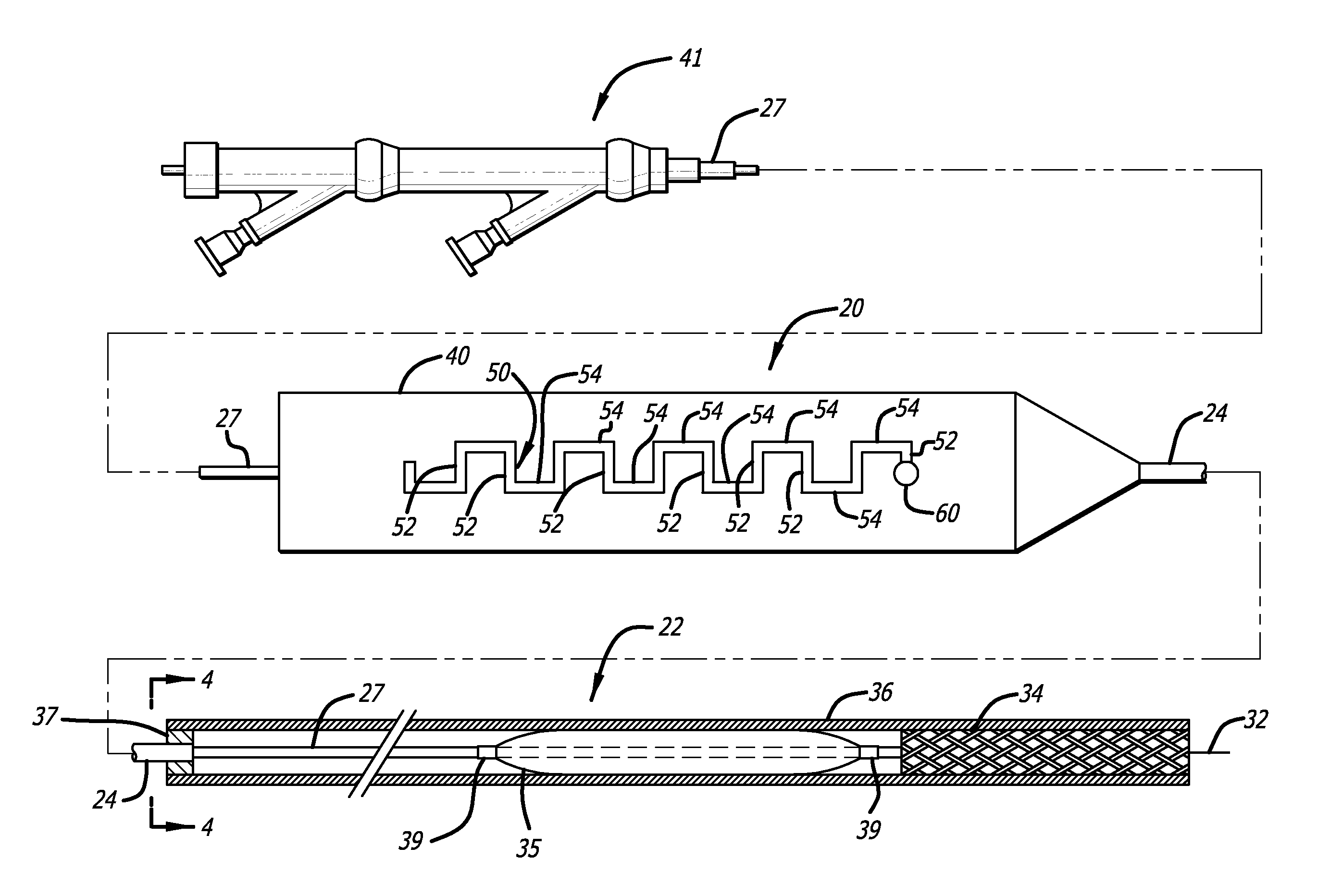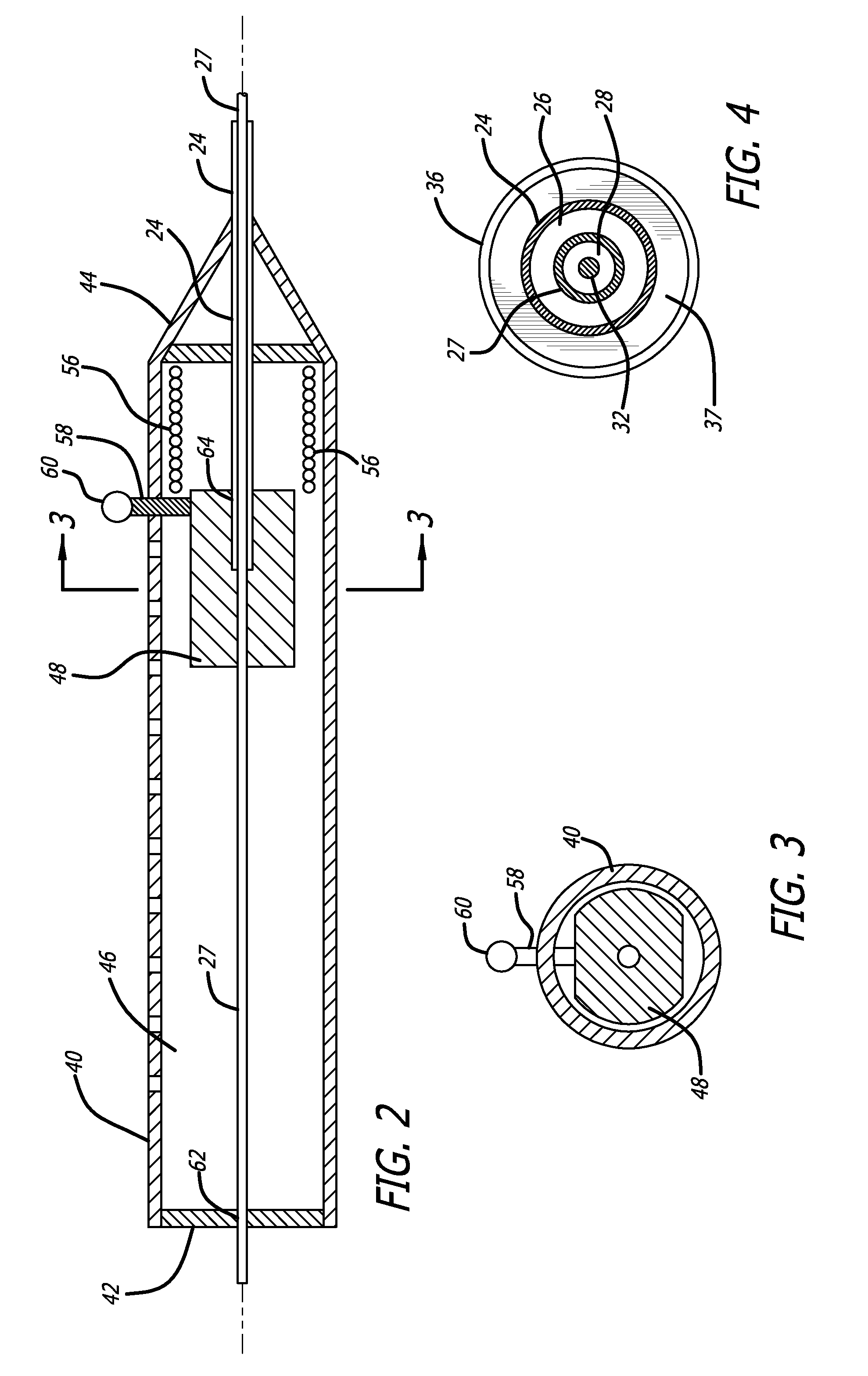System for controlled prosthesis deployment
- Summary
- Abstract
- Description
- Claims
- Application Information
AI Technical Summary
Benefits of technology
Problems solved by technology
Method used
Image
Examples
Embodiment Construction
[0018]With reference to the drawings, which are provided by way of exemplification and not limitation, there is described a controlled prosthesis deployment system having features of the present invention.
[0019]A preferred embodiment of the invention includes a release handle, generally identified by the numeral 20. The release handle is adapted to operate in conjunction with a catheter 22. The catheter is configured to remotely deliver a prosthesis in a body vessel or duct.
[0020]Catheters for remotely delivering a prosthesis are known, and may include a core cylinder 27 having an internal lumen 28 (FIG. 4). A guidewire 32 may be inserted within the lumen 28, according to known usage wherein the guidewire is first threaded into a body vessel (not shown), whereafter the catheter 22 is run up into the body vessel over the guidewire 32. At the distal end of the catheter, a prosthesis may be positioned to surround the catheter. In FIG. I it is shown that the prosthesis may be a self-exp...
PUM
 Login to View More
Login to View More Abstract
Description
Claims
Application Information
 Login to View More
Login to View More - R&D
- Intellectual Property
- Life Sciences
- Materials
- Tech Scout
- Unparalleled Data Quality
- Higher Quality Content
- 60% Fewer Hallucinations
Browse by: Latest US Patents, China's latest patents, Technical Efficacy Thesaurus, Application Domain, Technology Topic, Popular Technical Reports.
© 2025 PatSnap. All rights reserved.Legal|Privacy policy|Modern Slavery Act Transparency Statement|Sitemap|About US| Contact US: help@patsnap.com



